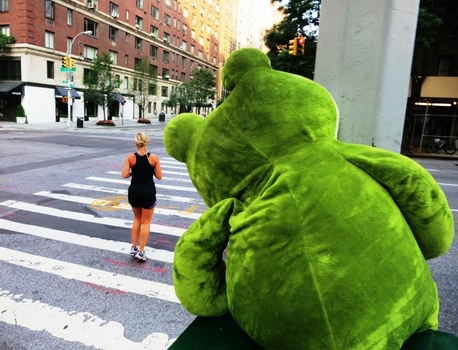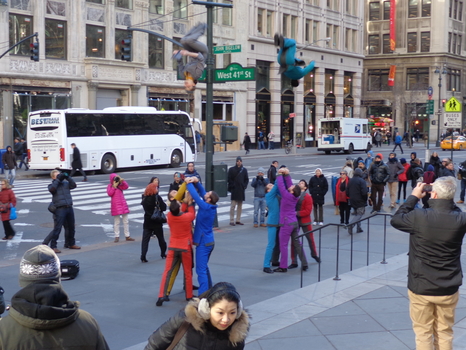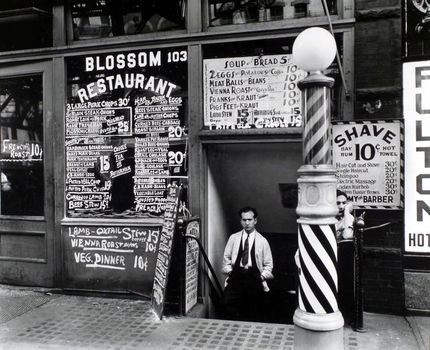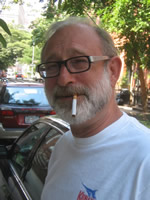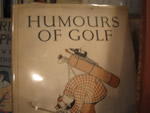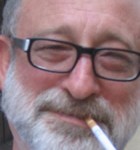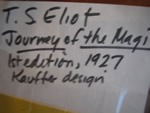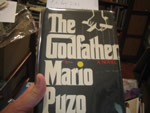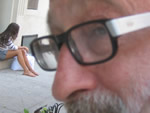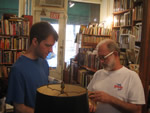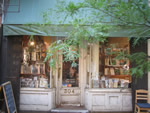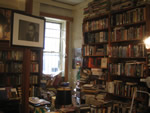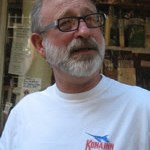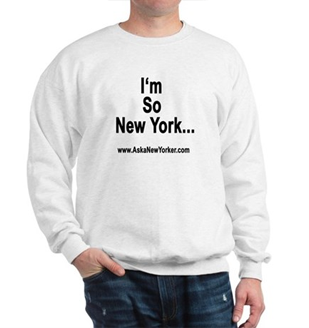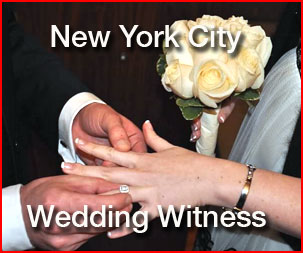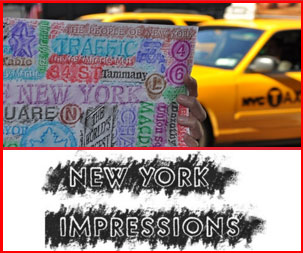Kim is the proud owner of Left Bank
Books in the West Village at 304 W. 4th St.
Ask a New Yorker: What was the first book you remember reading?
Kim: The first book I ever read? I think it was a book by the woman who wrote
Pat the Bunny
and it was about Rennet
Dessert. I think it was actually an advertisement for Rennet dessert but
it was written in a very Joycean way. I remember even as a tiny child I was
very impressed by that.
Ask a New Yorker: Rennet?
Kim: You know Rennet? Some
kind of thing they put in pudding and so on and so fourth. It’s supposed
to be bad for you, but she was raving about it. Anyway, that’s the first
book I ever remember reading. There may have been a few comic books before that.
Ask a New Yorker: Kim is an unusual first name for a man. How did that come
about?
Kim: My first name is Kim because my mother was intrigued by a bulldog that
lived down the street. His first name was Kim, and thus it happened.
Ask a New Yorker: What’s the name of your shop, and do you live in the
building?
Kim: Left Bank Books. No, the store front is part of a much larger building
and I don’t live in it. I live in Chelsea. It’s about ten blocks
away. So I walk down most mornings when it’s not raining, and open the
shop around 11:00am.
Ask a New Yorker: What kind of customer comes in?
Kim: You get a very different kind of customer. The book shop is really built
for book collectors or specialist book buyers who are looking for very specific
kind of things. Modern first editions, rare books, older books on art and photography
and so on. But we get a lot of tourist that come in and say, “Ah the perfect
village book shop”. Unfortunately we’re one of the only ones left.
So it may be perfect, but it’s pretty lonely.
Ask a New Yorker: Any celebrities come in and buy books?
Kim: The most books purchased has been Luke Wilson. You wouldn’t expect
that of Luke, but there you go. Kevin Kline has bought books here. Mathew Brodrick,
Sarah Jessica Parker, Julianne Moore and Gwyneth Paltrow, when she used to live
around. Katie Holmes had a photo shoot in front of this shop, and in the caption
of the photo shoot she said she just loved this book store and comes here all
the time. She has never bought anything, ever. This was pre-Tom Cruise. But
I don’t know what to tell you. I’d like to see a few more celebrities
come in and have look at some of the books I’ve got.
Ask a New Yorker: What are you reading now?
Kim: I am reading the Life
and Times of Michael K by J. M. Coetzee . A terrific book, one of his best.
He’s a noble prize winner and deserves that. He’s a very earnest
but terrific writer.
Ask a New Yorker: All very interesting stuff, really…but who are you?
Who is Kim? How did you get into this business? Tell us about yourself.
Kim: I will do. I was a professor of English for 27 years at the University
of Southern Mississippi. I started collecting books in the late 70’s,
modern first editions. So I was very interested, I was intrigued, I was passionate
about collecting books as well as writing about them. When it came time to retire,
which was in late 2004, I, for reasons unknown, decided instead of golf and
the sunny climes of Mississippi that I would move to New York City, wondering
at that time what exactly I would do for money. I was walking by this shop on
a summer afternoon. I walk in, I have 20,000 books at home about half of them
first editions, I have no way of figuring out how I’m going to make money.
If I owned this shop I could kill two birds with one stone. So I walked in,
the owner was behind the desk wearing his beret. I said, “Would you ever
consider selling this shop?” And to my shock and surprise he said, “Matter
of fact, yes. I have a grandchild that I would like to see more of.” So
it started there. He was asking a reasonable price. I paid that price. So, since
the beginning of 2005 I reopened with half the stock being books from my house.
Ask a New Yorker: What did you teach?
Kim: I taught Modern English literature was my specialty. But for the last
seven years I was there I taught the history of rock and roll and everyone had
forgotten that I taught literature at all.
Ask a New Yorker: Have you been to The Rock n Roll Hall of Fame?
Kim: Yes, I have. It’s a fine place, Cleveland’s finest.
Ask a New Yorker: What else would you like to share?
Kim: New York use to be the great American book town. If you really wanted
a rare book or a first edition New York was the place to come. We are now down
in Manhattan, down to a handful, maybe ten. L.A., for instance, hardly thought
to be the cultural center of the country, has ten in one little district. What’s
happening here is the double whammy. One is high rents and the other is if you
really, really want to be a book seller you can close down your store front
and take all your books to your apartment and work online. To not have a store
front does not mean, as it used to mean, you could no longer do this. You can
still do it but just virtually.
Ask a New Yorker: What’s your most expensive rare book?
Kim: Right at the moment it’s a first edition with a dust jacket, Rudyard
Kipling’s Just So Stories for a mere $18,000. Also have a first edition
in lovely condition of Huckleberry Finn for $16,500. The Godfather first edition
here went for $900. It goes down from there, but there are still some $5,000
to $10,000 books scattered amongst those. But most of my books are not that
expensive, I’d like to say.
Ask a New Yorker: That would pay your rent. So what’s up with first editions
and their high prices?
Kim: The intrigue that surrounds first editions is hard to fathom. I think
finally it is a kind of passion. Normally first editions are rarer then subsequent
editions. The first edition is the book the author saw through the presses.
So when you buy the first edition you can later sell it and get all your money
back and probably ten times for what you paid for it if you buy the right book.
Secondly, first editions are the closest to the way the book appeared when it
first came into the public eye.
Ask a New Yorker: How many books get printed in first editions?
Kim: It’s always a question. And often we don’t know the answer
to that. Sometimes publishers will reveal that 10,000 or 20,000 or 50,000 or,
like Harry Potter, 500,000 were published in the first edition.
Ask a NewYorker: Well you gave us lots of answers today and for that…thank
you.


